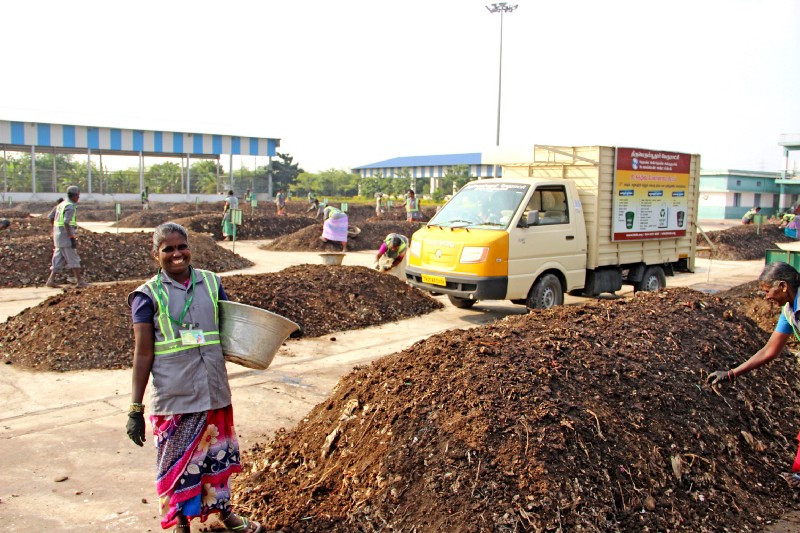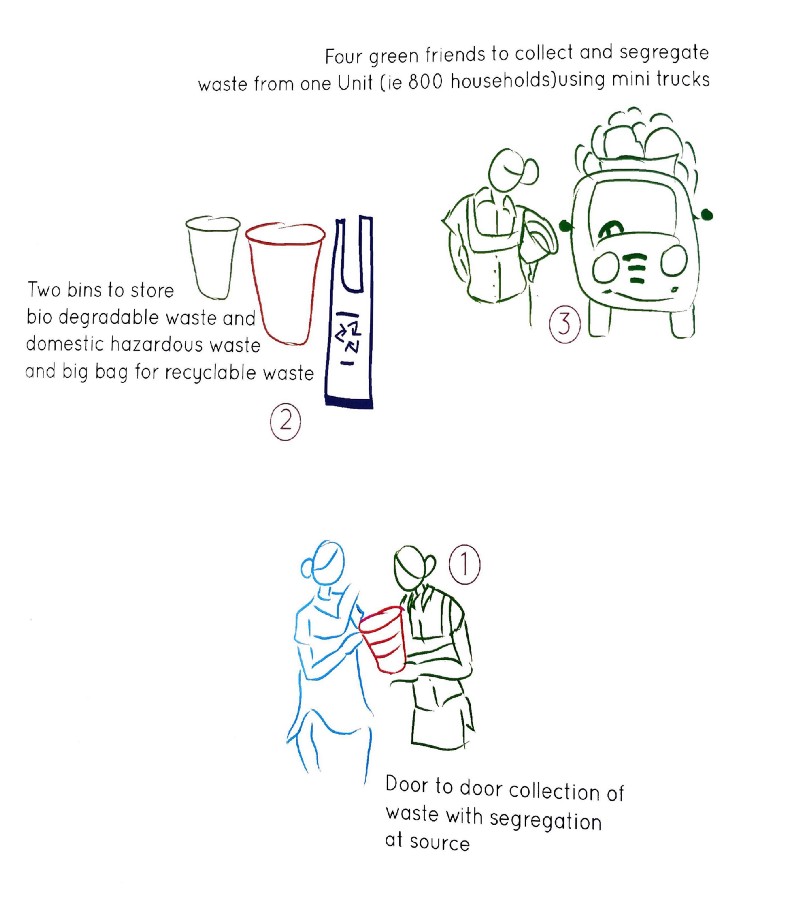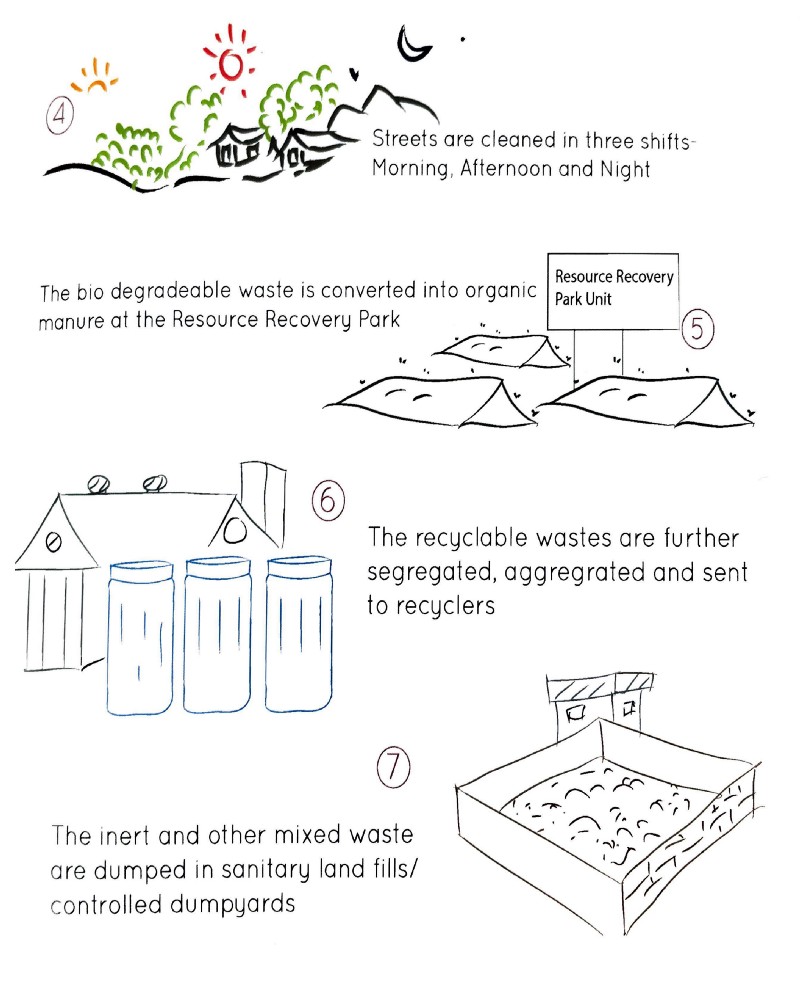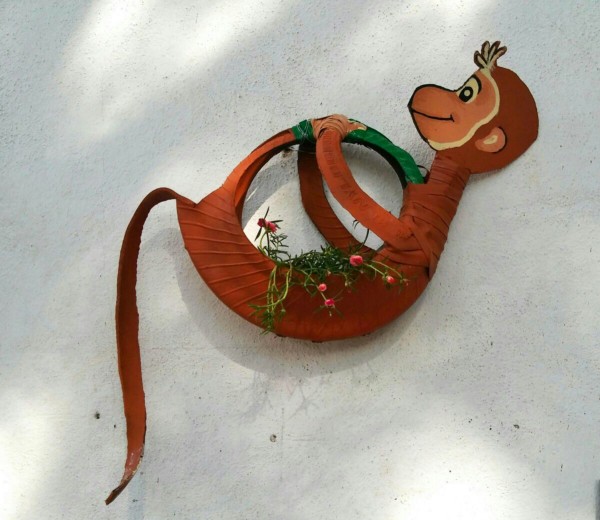Do you know what happens to your trash once it leaves your home?
Behind the scenes of a UNESCO World Heritage Centre, some invisible hands are at work to keep the town spic and span. We bring you the story of how a quaint little town in Southern India, Mamallapuram became waste-wise and garbage-free.
In Mamallapuram, every day is a busy one. The town is a UNESCO World Heritage Site, famed for its ancient rock-cut temples and beautiful seashore. Lakhs of tourists visit the town every year seeking inspiration from its history. Mamallapuram’s lovely shoreline also invites thousands of backpackers. Tourists, however, leave behind a lot of trash. The town itself has a little more than 5000 households who generate garbage.
In 2008, Hand in Hand India India came to manage the town’s municipal solid waste. Today this town with a population of just over 20,000 people has become completely litter-free.

The journey of your household trash is a long one, creating stories as it goes. Here’s a step-by-step on our Municipal Solid Waste Management Process. We call it Recycle for Life.
Step 1: Here come our ‘Green Friends’
The first step in the journey of trash begins in your home. In Mamallapuram, waste is collected from homes by our very own green friends. This brigade of ours is hardworking; their day begins at 6 am when they start going door-to-door. They are well trained in not just waste management but also advocacy. The Green Friends educate residential and commercial spaces on the importance of waste segregation. Different coloured bins are provided for easy identification. The Green Friends come from economically challenged backgrounds, and by employing them we are trying to create stable job opportunities for them. Take, Mariappan, one of our oldest green friends who has come a long way from being a labourer to having a monthly salary. He sets an example for sincerity, “I give out warnings if the waste isn’t segregated!” Since this town also attracts tourist crowd, it becomes a lot more essential to ensure discipline amongst the residents, locals and tourists. Once collected, it’s taken to the Recovery Resource Park to be further segregated.

Step 2: It’s all in the processing
The Resource Recovery Park is a large space where waste collected is further segregated. The aim here is to send as little waste as possible to the landfills. At Mamallapuram, a daily collection of 5.5 MT of waste gets collected every day, out of which 6000 kgs of waste is organic, 500 kgs of inorganic waste is recyclable and the rest is shredded.
Step 3: Composting is the way to go!
Organic waste includes anything that is bio-degradable such as kitchen waste. This is unloaded from trucks, then stacked up in piles to dry out the excess water and liquids. This process takes up to 15–90 days depending on the organic waste material. The drying waste assumes a dark blackish colour, from where it is sieved with the help of a large motor-run sieve that helps further breaking down the waste. The next step is to ensure the sieved organic waste further goes into vermicomposting while the bigger chucks of food waste go into the biodigester. Vermicomposting is one of the best ways to produce compost with the help of earthworms. This enriched compost is further used in the park’s herbal garden and sold to local farmers.

The bio-digester is a bio-methanation plant that ferments food waste. The plant has a capacity of handling 500 kg of food waste every day and generates 100 cu m of fuel every day. Most of the food waste from the many hotels and restaurants in Mamallapuram goes into this plant. This energy is further converted into electricity. The electricity generated thus is used to light up the street lights in Mamallapuram!
The Bio-gas project was awarded the runner-up in the BBC Trash to Gas challenge. Take a virtual look at the Mamallapuram project through this video here.
Step 4: The wonders of upcycling
The inorganic waste collected from Mamallapuram is further segregated into different kinds of materials like recyclable, plastic, glass, metal, sanitary waste etc. Sanitary waste is incinerated while dry waste that cannot be used further goes through the shredder. Plastic has seven different variations and depending on the material, it goes through the plastic shredder. All this is then upcycled into different kinds of products such as furniture or garden decor items like plant holders.


Waste to art projects from our Resource Recovery Parks
Recycle for Life is a success!
Waste Management is a huge crisis that India is facing. Our project in Mamallapuram is a small but extremely successful example of how this crisis can be managed realistically. The Mamallapuram project has an 80% success rate, which means that 80% of the municipal solid waste generated has been averted from going to the landfills.
The model uses a combination of community awareness creation and stakeholder participation. This collaboration has been the backbone of sustainability in our Waste Management intervention. The Recycle for Life model has also been successfully replicated by HiH India in other municipalities such as Sriperumbudur, Rameswaram and Karaikal in Tamil Nadu.
Want to visit our Resource Recovery Park? We arrange trips for school and college students, larger groups of like-minded people or individuals. We also conduct training on segregation of waste and best solid waste management principles.
Hand in Hand India’s Solid Waste Management programme aims to reduce the waste that goes to landfills. We create end-to-end solutions to manage waste generated by urban and rural areas. Our model is called ‘Recycle for Life’ and uses a combination of community awareness and stakeholder participation. Read more about our work here.






